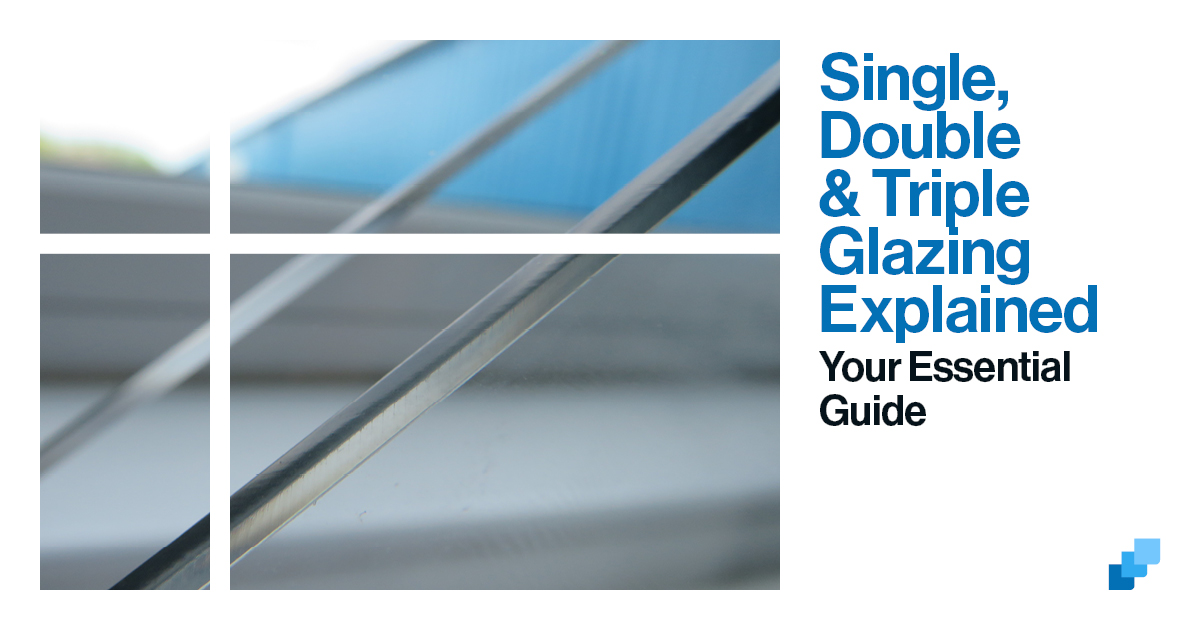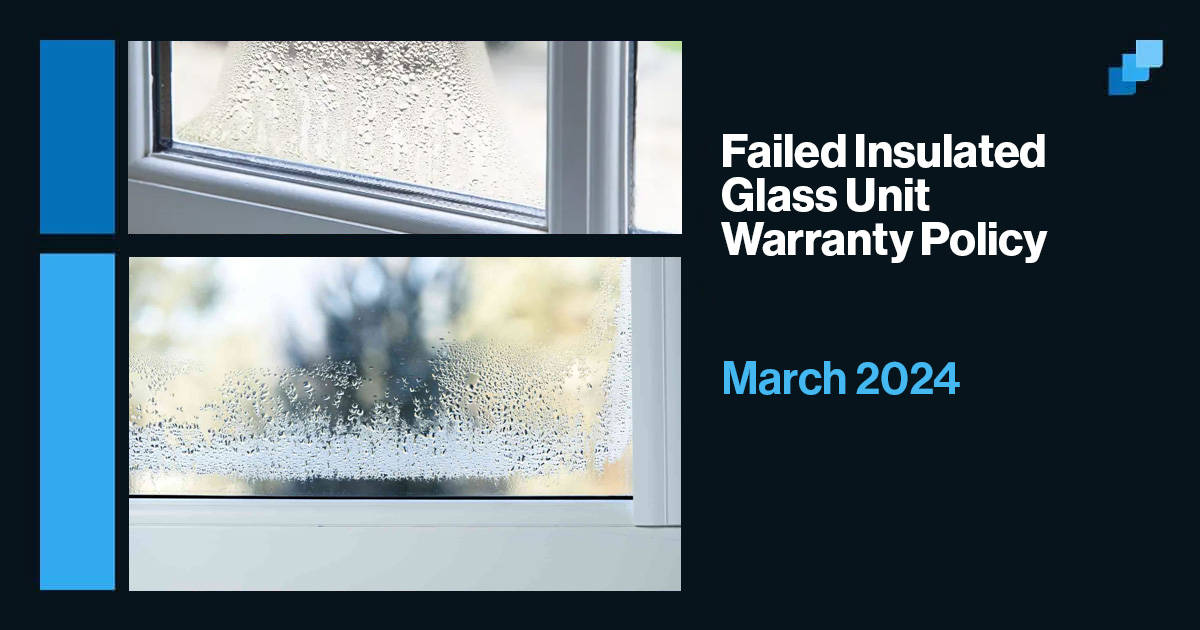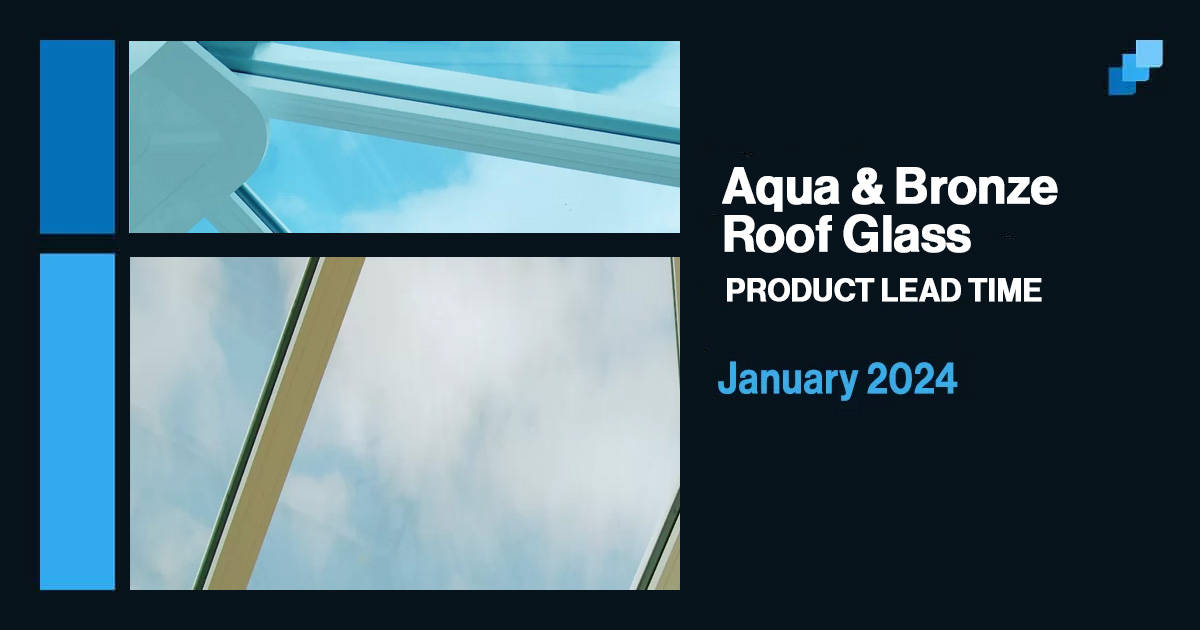What type of glazing do you need? Let’s find out! When ruminating over whether to make a change in your home, it is important to have all the necessary facts at your disposal. Making an informed decision is easier this way. When it comes to deciding whether to have single, double, or triple glazed windows there are a few factors to consider. Let’s have a look into the benefits of each of the types of glazing, and the environments, in which, they are most well-suited.
TYPE OF GLAZING #1: SINGLE GLAZING
As the name suggests, Single Glazed windows are constructed using a single pane of glass. The pane of glass will be somewhere between 3mm and 10mm in depth. Of the 3 types of glazing, this one has been around for the longest, with the first accounts of single glazing dating back hundreds of years.
THE BENEFITS OF THESE TYPES OF GLAZING
- The main benefit of Single Glazing glass is probably the price. They are substantially cheaper than their double and triple glazed counterparts.
- Single Glazed units are easy to replace, as they do not contain a gas, they do not suffer from condensation issues in the same way as double and triple glazing.
THE IDEAL LIVING SCENARIO
Single glazed windows suffer from sound-proofing issues, they also aren’t the best when it comes to insulation, solar gain and security. With this in mind, the ideal living scenario for having single glazed windows would be a remote area, with a temperate climate, that is consistent all year round…
THE PERFECT ENVIRONMENT FOR SINGLE GLAZED WINDOWS: OAHU ISLAND, HAWAII

TYPE OF GLAZING #2: DOUBLE GLAZING
Since double glazing became popular in the 1970s, these revolutionary glass units have saved British homes millions, possibly billions, of pounds on energy bills. Double glazing is made by the combination of two panes of glass separated by either a vacuum, air, argon or krypton.
THE BENEFITS OF THESE TYPES OF GLAZING
- When it comes to Single Glazing vs Double Glazing, there are key differences in this battle of glazing glass. First and foremost, Double-Glazed units are effective insulators by design. As such, they have much lower U-values than Single Glazing. Common U-values for double glazing units are around 1.5-3.5, but it is possible to have a value as low as 0.9 in these types of glazing. This will contribute to lower energy bills.
- Looking at Single Glazing vs Double Glazing again, another benefit of double glazing is the soundproofing element that comes with it, an area where Single Glazing struggles. The soundproofing provided by double glazing depends on two factors: 1) the separation between the panes of glass and 2) whether one pane of glass is thicker than the other. A Double Glazing unit with a larger separation will be more soundproof than one with a lower separation. This, coupled with one pane being thicker than the other, e.g. 1 pane is 6mm and the other 4mm, creates the maximum soundproofing. This makes these types of glazing options very versatile.
- A high solar energy reflected percentage. In contrast with Single Glazing, Double Glazing is able to maintain cooler indoor temperatures in the summer. This will be more comfortable for your home’s inhabitants.
THE IDEAL LIVING SCENARIO
Double glazed windows are expensive to repair. To expand, this is down to the fact that the gas filling the separation can escape and cause the window to condense. However, Double Glazed windows are effective insulators and potent at sound proofing, and are also more valuable than Single Glazing when it comes to security. With all this in mind, the ideal living scenario would be somewhere that can have fluctuations in temperature, perhaps a city or suburb-type location…
THE PERFECT ENVIRONMENT FOR DOUBLE GLAZED WINDOWS: GLASGOW, SCOTLAND

TYPE OF GLAZING #3: TRIPLE GLAZING
Triple glazing is an insulated glass unit, comprised of three panes of glass. These separated by either a vacuum, air, Argon or Krypton. Benefits include almost all the variables mentioned under double glazing, most of them being to an even higher degree.
THE BENEFITS OF THESE TYPES OF GLAZING
- The degrees will certainly be higher in your home during the winter months. Due to, triple glazed windows being incredibly powerful when it comes to insulation. Some Triple Glazed units have U-values as low as 0.5!
- A high Solar energy reflected percentage. Thus, keeping your indoors nice and cool in the midst of summertime. The value of this can be upwards of 70%!
- Talking soundproofing, triple glazing again is a step up from double glazing. This could be viewed as unnecessary, but that depends on how noisy your location is. Either way, sounds from outside will be almost a thing of the past with triple glazing in your windows. This is especially prevalent if the separation between the panes is larger, with a combination of thicknesses e.g. 4mm, 6mm and 8mm.
- A large benefit of triple glazing is security. Burglars will be unable to breach the near-impenetrable fortress that your home has now become. In all seriousness, it stands to reason that a potential intruder would find it much tougher-going breaking a window that contains three separate panes of glass as opposed to one that only contains one or two.
THE IDEAL LIVING SCENARIO
Triple glazing is cold-ready by design. In milder climates, these types of glazing are sometimes viewed as unnecessary, or, in a word, overkill. It is the most expensive of the three glazing options. But, if your budget allows it, statistically the best. With these things in mind, the ideal living scenario for Triple Glazing would be somewhere that is cold all year round. Where, the units insulating properties can be fully utilised.
THE PERFECT ENVIRONMENT FOR TRIPLE GLAZED WINDOWS: REYKJAVÍK, ICELAND

CONCLUSION: DIFFERENT TYPES OF GLAZING SUIT DIFFERENT ENVIRONMENTS
In conclusion, there are scenarios where all 3 of the types of glazing can come in both handy, and not so handy. Single glazed windows are cheap, if unspectacular. Double glazing is cost effective, but expensive to fix. Triple glazing has all the best statistics, but is arguably unnecessary. To summarise, your choice of glazing is dependent on a multitude of factors, including: where you live, your areas’ climate and your budget.
However, no matter whether you have decided on single, double or triple glazing, make sure you choose the best glass supplier, and the best glass! We hope you now feel more informed on the three types of glazing, and are in a position to make your final verdict. Thank you for reading!






